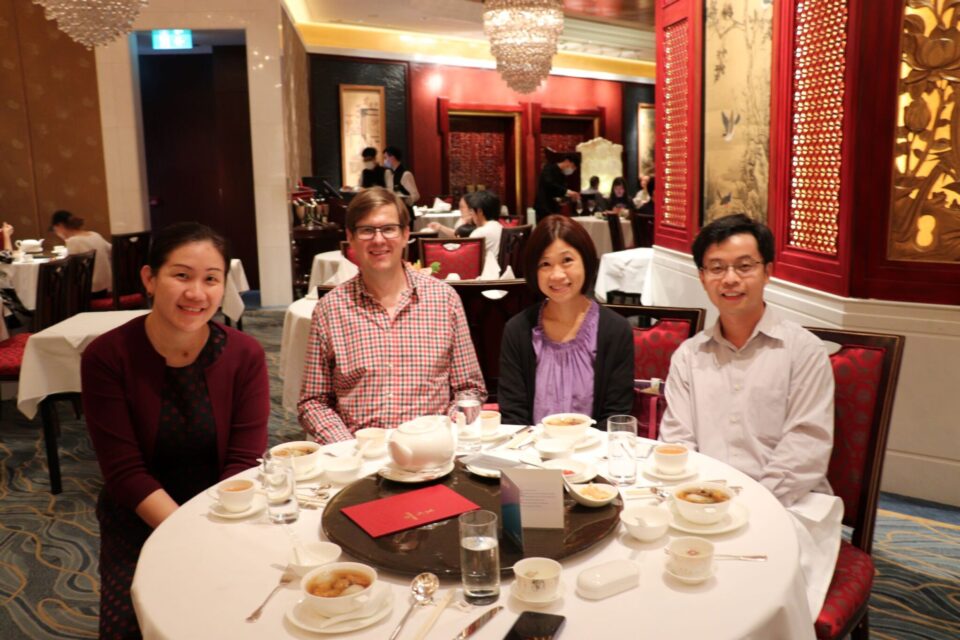
2021 All-Actuaries Virtual Summit through a global lens
Kitty Chan, Asia Liaison Manager at the Actuaries Institute, summarises the array of sessions catered for the Institute’s Asia-based Members at the 2021 All-Actuaries Virtual Summit.
Institute Councillor Iris Lun joined the Virtual Summit’s Organising Committee as the International Curator to ensure the Institute’s flagship event addressed some of emerging issues occurring beyond Australia’s shores. As a direct result, I am pleased to report that participants in Hong Kong, China, Singapore, Malaysia, Japan, Korea, Taiwan, Thailand and even from Sri Lanka attended the Virtual Summit!
Out of the more than 80 Plenary and Concurrent sessions, the Institute presented five sessions with a specific Asia focus.
How Big Data and Machine Learning are changing Life Insurance Today – Wednesday 28 April
Presented by Marc Sofer (Head of Data and Strategic Analytics at RGA). Chaired by Iris Lun.
Marc Sofer is at the cutting edge of what is happening on the ground in life insurance in regards to big data and machine learning.
He addressed how big data is changing the world of insurance.
“High volume of various types of data generated at high velocity, coupled with the increase in storage capacity and increase in processing power, enable insurers to gain deeper insights from new data which helped them to develop new customer propositions,” Marc explained.
Marc commented that there are numerous studies that link behavioural risk factors as one of the leading causes for illnesses and mortality globally. Hence, a better understanding of these behavioural risk factors will be a key for insurers to stay at the forefront of risk management.
Marc then dived into a selection of case studies from Bancassurance Partnership in Asia, Credit Bureau Data, and Digital Health Data Transformation, to share what RGA has developed based on experience in Asia and globally, and the key takeaways for the Australian market.
Life and Health in Asia – Pricing Trends and Data Science Approaches – Thursday 29 April
Presented by Louis Lee (Partner of Deloitte’s Actuarial and Insurance Solution) and Nathan Thomas (Director of Data Science & Multinational Sales at Montoux). Chaired by Iris Lun.
In Asia, the life and health insurers are a mixture of diverse multinational and local insurers and regional players. The panel have witnessed insurers are branching out from their core products and propositions into complimentary products which their customers need. Examples include:
- Life insurers have been moving more and more into medical reimbursement products.
- Traditional health insurers sell critical illness and long-term products.
- General insurers sell both medical reimbursement and short-to-medium critical illness products.
The panel examined topics including:
- using data in pricing;
- customer lifetime value;
- a complex product – multiple critical illness;
- pricing considerations;
- beyond medical coverage benefit; and
- most importantly – takeaway and implication for Australia.
“There are lots of technology and data out there, and digital technology that will allow you to calculate those kinds of premium rates that are going to achieve the objective. If you look at the past, you would have seen probably more commonly flat rate increases going across the market and for a lot of insurers, I would expect that to be more less common going forward. I know flat increases are very easy to communicate. But you can still have a complicated change in the shape of your rates but still have an overall on average rate change which you can still communicate quite easily,” Nathan said.
Louis emphasised Asia-Pacific and Australia as a whole is getting closer together and the major life players in Australia are foreign owned, there should be some cross synergies to ultimately serve what customer really needs. Moreover, diseases are common in different populations and product innovation is plentiful in Australia, such collaboration and synergies should bring something interesting in the market,
“Things that we see in today’s sharing actually came from actuaries that came out of Australia…There are lots of opportunities for Australian actuary if they want to try their experience and profession in different markets in Asia,” Louis said.
Asia Update – Thursday 6 May
Presented by Andy Yang (Chair, Asia Subcommittee). Chaired by Robert Chen (Taiping Life Insurance Co).
Andy Yang, a recent recipient of the Distinguished Service Award in the Institute’s recent 2021 Volunteer of the Year Awards, has served as a volunteer for over 21 years, including two runs as a Council member. Andy currently is a member of the International Council Committee and the Chair of the Asia Subcommittee. He presented key updates from Asia in this presentation.
Over 12% of the Institute members are based in Asia and many Australian actuaries are holding senior and leadership positions in the Asian markets. China, India, Indonesia and Japan are now listed among the top 10 markets with greatest insurance potential, these are the main drivers for the world’s economic growth over the next decade.
“Actuaries are one of the most globalised professions, and (those accredited with) FIAA can practice in all insurance markets in Asia. There may be local requirements to be an approved actuary,” Andy said.
To continue this global acceptance of the FIAA, the Institute aims towards our qualification remain relevant internationally. In the pandemic environment, the Institute had moved to the virtual platform for CPD program. Andy reported there was a greater engagement from both speakers and participates, and the contents were diversified and relevant. The Institute values the relationship with local bodies, as we are unable to deliver live CPD in all locations – we have the philosophy of sharing CPD by hosting joint events.
What are the issues faced by the Institute’s Asia-based members?
- Asia is a competitive situation with other actuarial bodies internationally. Student members may have moved and are moving to other bodies if they think the path is cheaper, faster, easier, more peer support (boss and study leave).
- Time zone differences and lack of study buddies in Asia – this may be no longer be an issue for Student, as the Institute is now delivering the study program and exam online!
- A unique feature of Australia is the use of universities for Part 1 qualifications, and the large number of international students. Andy estimated that 40% of actuarial student Australia are international students and urged the Institute to encourage university subscription and work closer with the accredited universities to communicate the Institute’s Actuary and Fellow program.
- China is the second largest insurance market in the world, and is projected to become the largest by the mid-2030’s. We need to pay it due attention!
The Asia Subcommittee is keen to improve members retention and build a local community across the region. We have been using social platforms and chat groups to stay connected during the pandemic period – which work well! The Institute has set up a Joint Actuaries Office in Hong Kong to support the actuarial profession in the region, the collaborative efforts from the Institute, CAS, IFoA and SOA.
What does COVID-19 mean for motor insurance in Asia – looking back and going forward – Friday 14 May.
Presented by Dr Weihao Choo (Head of Consulting at Munich Re) and Dennis Tay (Insurance Solutions Manager at Munich Re. Chaired by Ash Evans (Taylor Fry).
Dr Weihao Choo and Dennis Tay shared their insights into highly competitive motor insurance Asian market.
Dennis stated the COVID-19 impact varies by market, but overall GWP was reduced, lower claim frequency and loss ratio. Moreover, customers are demanding reduced premiums, refunds and delayed premium payments. Insurers’ reaction were very mixed in such as challenging time, they maintained the status quo (‘wait and see’), offered premium discounts to gain market share (‘traditional change’) and disrupted the market with product innovation (‘Innovative change’).
“Frenzy of buzzword, like ‘go digital’ etc. in the insurance industry, but not all insurers were in the position to implement changes in a way which was forward looking and sustainable,” Weihao said.
Common challenges for the insurers include data limitation, portfolio transparent, manual operational processes, and underinsurance. So how will the future look like? Weihao predicted the risk is ever-changing and there will be demand for flexibility and technology advancement. Actuaries and insurers need to overcome the main hurdles, such as technology advancement in operational and customer engagement, data credibility and data correlation with the technology being used. Lastly, they need to consider customer and regulator perspectives on privacy and discrimination.
Although technology can overcome tracking customers’ journey, a set of stringent governance is required. If bad drivers can be singled out, will the existing rating factors can be even more biased?
Critical Illness in Asia: Success Factors, Challenges & Future Direction – Thursday 20 May
Presented by Wendy Wang (Senior Portfolio Management Actuary, Swiss Re). Chaired by Iris Lun.
Wendy Wang shared her observations in Asia about the landscape, product innovation trends and its success factors in Asia and reasons why it has not extended to Australia.
Critical illness (CI) products (more commonly known in Australia as ‘Trauma’) have been driving protection insurance growth and the bedrock product in Asia in the past decade, especially in China, Hong Kong, Korea and Singapore.
Driven by market competition, sales channel and technology, the product innovation trends are moving towards complexity. It is common to have several payments to cover multiple-pay CI and cancer relapse with customisation to boost customer engagement.
Wendy summarised the success factors in Asia as aging population, high saving propensity, loss aversion, family support, distribution (driven by agency), local regulatory/macro environment and the health protection gap.
“Health protection gap is made up of cost of healthcare, social safety net and alternative access to insurance protection, which is worth US$1.8 trillion in Asia as estimated by Swiss Re Institute,” Wendy explained.
In contrast to the Australian market, the demand and supply for CI are lower. This can be explained customers’ lower propensity to save, superannuation, public support (Medicare & surcharge), generous social safety net and retail distribution via by independent financial adviser (who aims to ensure customers have continuous income stream).
Due to the long-term coverage period and guaranteed premiums, insurers are facing increasing challenges, including:
- uncertain cancer and cardiovascular disease trends in the context of rapid changes in lifestyle and health risk factors, consumer awareness and medical advancements, which may lead to mispricing risks;
- increasingly complex product design and extensive coverage of diseases;
- behavioural issues by stakeholders other than customer: policyholder, distribution channel and regulator; and
- in the aftermath of COVID-19, low interest rate environment and border restrictions (face-to-face sales).
For this competitive business block to remain sustainable, Wendy suggested insurers to go beyond actuarial and seek collaborations to:
- enhance risk understanding – ‘cross-disciplinary’;
- strengthen control cycle – from risk prediction to risk selection and prevention; and
- shorten duration and regular definition review – “cross-collaboration between industry and regulator” to balance competitive market forces.
Special thanks to Iris Lun, Robert Chen and Ash Events for taking the time to facilitate these sessions!
In-person networking returns to Hong Kong
On Tuesday 18 May, Hong Kong-based Members had the opportunity to reconnect at the official Virtual Summit in-person networking event, hosted by Councillors Iris Lun and Steve Hui. It has been a long time since we last met face-to-face without masks!

I hope all delegates enjoyed the Virtual Summit as much as I did. Catch up on further coverage of the Virtual Summit on Actuaries Digital.
CPD: Actuaries Institute Members can claim two CPD points for every hour of reading articles on Actuaries Digital.






